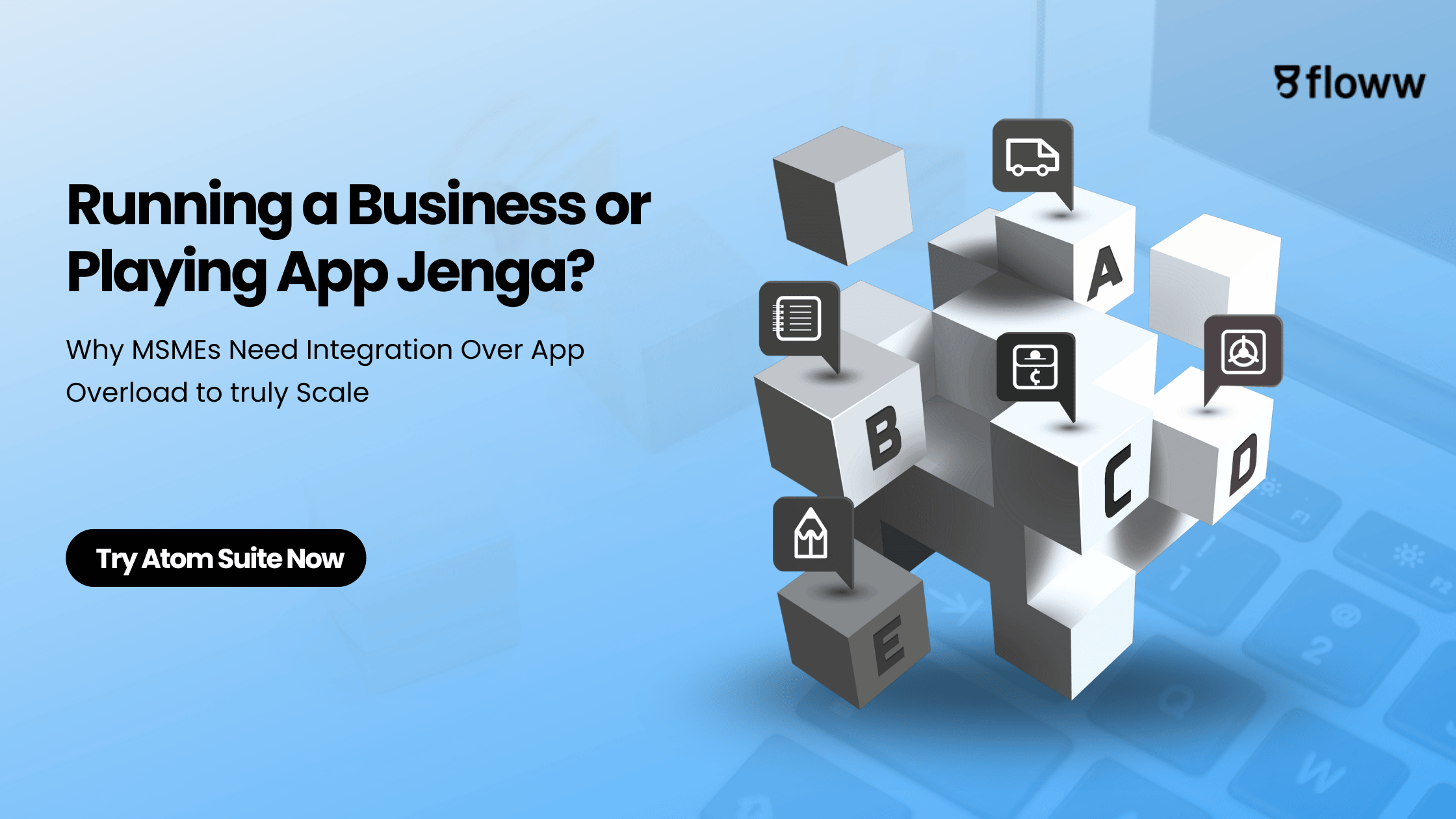Running a Business or Playing App Jenga? Why MSMEs Need a Better Strategy
Running a business shouldn’t feel like balancing a tower of mismatched apps. One wrong move and it all crashes. MSMEs deserve more than digital Jenga. Discover why it’s time to ditch the chaos and stack your tools the smart way.

In the race to stay competitive, small and mid-sized businesses often fall into a modern trap. They think that more apps equal better productivity. Most MSMEs are sadly running their businesses by juggling a fragile stack of tools. This stack includes everything from CRM platforms and task managers to payroll software and messaging apps. The list is never-ending.
So if you’ve ever felt like you’re spending more time managing tools than growing your business, you’re not alone. The current landscape of app overload is not just inconvenient. It is actively undermining operational clarity, employee productivity, and long-term scalability.
What MSMEs need isn’t more digital tools. What’s needed is a smarter, integrated strategy that puts cohesion and control back in the hands of business owners and teams.
App Overload in Small Businesses

Let’s start with the numbers.
According to the data collected from SaaS-tracking platforms, the average small business uses over 10 different apps daily to manage its operations. These include email platforms, HR software, CRMs, communication tools, task managers, analytics dashboards, finance trackers, and more.
While each tool promises efficiency in its own domain, their collective result is often disjointed workflows and decision paralysis. Instead of being enablers, these tools create piles of information, requiring constant context-switching and manual syncing.
Here are the common symptoms of app overload in small businesses:
- Multiple logins and scattered data
- Redundant notifications and updates across platforms
- Breakdown in cross-functional collaboration
- Conflicting data reports leading to poor decision-making
- Team burnout due to digital fatigue
This creates a fragile, Jenga-like setup. One wrong move or one failed sync, and operations come to a halt.
The Real Cost: Productivity, People, and Profitability

App overload doesn’t just cause minor irritations. It introduces invisible inefficiencies that directly impact your bottom line.
Lost Time, Every Day
Studies show that employees lose an average of 30–45 minutes daily switching between tools. That’s nearly 4 hours a week per employee, a time that could be spent on value-generating work. For a 20-person team, that’s 320 hours per month spent navigating software, not solving business problems.
Compromised Team Focus
When tasks live on one platform, conversations on another, files in a third, and approvals in a fourth, focus automatically becomes fragmented. Team members struggle to see the full picture of a project or client relationship. This leads to duplication of efforts, miscommunication, and deadline slippage.
Inefficient Decision-Making
Business leaders often depend on data dashboards to make critical decisions. But when your analytics tool doesn’t talk to your task manager or CRM, you’re either left guessing or relying on outdated exports. Disconnected data = disconnected strategy.
Tool Fatigue and Lower Adoption
Ironically, the more tools you add, the less your team uses them effectively. Most businesses report less than 50% active usage across their subscribed platforms. When employees feel overwhelmed by digital systems, they revert to informal methods like spreadsheets, WhatsApp, and manual reminders.
This erodes consistency and compliance, making operations fragile.
Read More: 5 Apps, 5 Headaches. 1 Atom Suite To Rule Them All.
The Core Problem: Lack of Integration in MSME Business Strategy

Most MSMEs do not have a dedicated IT strategist or operations consultant. Decisions about tech stacks are often reactive. A new tool is introduced to fix a pain point without evaluating its long-term fit with the rest of the system.
Over time, this patchwork creates a "Frankenstack”.
A Frankenstack is a complex system of loosely connected tools that don't scale well or communicate with each other.
A smarter approach is to move towards an integrated business strategy, where tools are not just chosen for their individual capabilities. It is chosen for their ability to work together seamlessly and contribute to overall business clarity.
This is the foundation of a future-ready MSME business strategy: one that doesn’t depend on duct-taping apps together, but on creating a cohesive digital infrastructure.
What Integration Looks Like?
So, what does an integrated tool ecosystem for MSMEs really look like? It’s not just about using fewer tools. It’s about using tools that are:
- Built to work together
- Designed for business visibility
- Customisable to workflows
- Simple to adopt across teams
Competitive Advantage MSMEs Often Miss
Here’s what’s often overlooked. Operational clarity is your competitive edge.
In crowded markets, it’s not just your product or service that sets you apart. It’s how fast, efficiently, and accurately you deliver it.
When you streamline business operations through integrated tools:
- Your sales cycle shortens
- Your team collaborates better
- Your client experience improves
- Your insights get sharper and faster
- Your margins improve through better resource use
This is where integrated tools for MSMEs shine. They don't just reduce cost, they amplify capability.
Beyond Efficiency: Integration Builds Agility
Markets are changing faster than ever. MSMEs that survived the pandemic did so not by adding more apps but by becoming more agile.
When your tools are unified, you can adapt workflows, launch campaigns, onboard new employees, and implement process changes swiftly. You’re not bogged down by disconnected systems. You’re free to move at the speed of opportunity.
This agility doesn’t come from software alone. It comes from choosing a digital foundation that flexes with your business.
Get the Free Atom Suite Tour & Decide For Yourself.
Choosing the Right Platform: Questions Every MSME Should Ask

Before investing, pause and ask:
- Does this tool solve more than one business problem?
- Can it integrate with my current workflows or replace multiple tools entirely?
- Can teams actually use it without requiring weeks of training?
- Can businesses access all core operations, including tasks, communication, client data, and payroll, under one unified system?
- Will this tool scale with me as my business grows?
If the answer is no to most, you’re likely adding to the problem, not solving it.
What you need instead is a unified platform, like Atom Suite, built specifically for MSMEs that are tired of playing App Jenga.
Also Read: Is Your Inbox A Warzone? Don't Worry, We Have You Covered.

